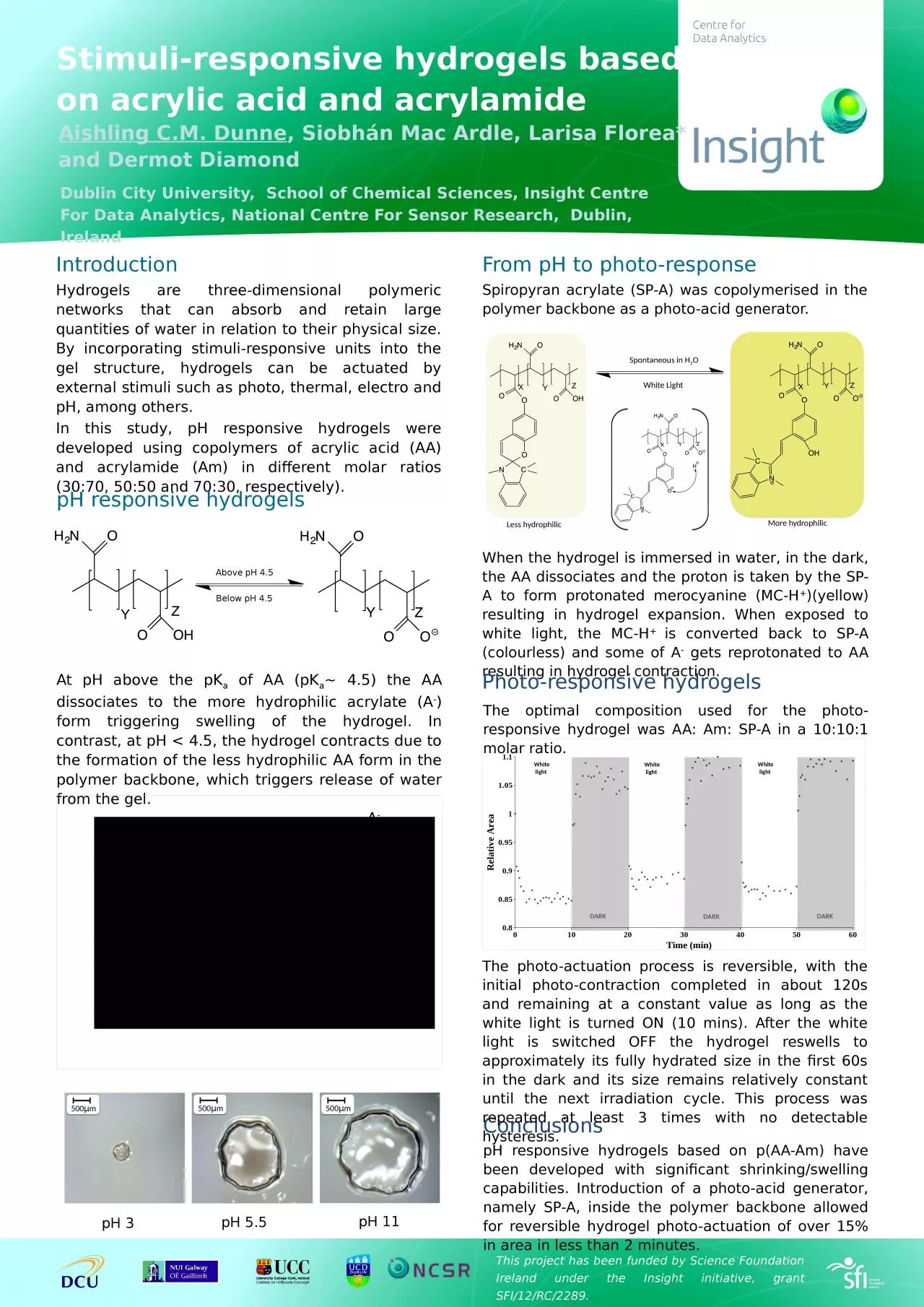

Hydrogels are threedimensional polymeric networks that can absorb and retain large quantities of water in relation to their physical size By incorporating stimuliresponsive units into the gel structure ID: 918529
Download Presentation The PPT/PDF document "Stimuli-responsive hydrogels based on ac..." is the property of its rightful owner. Permission is granted to download and print the materials on this web site for personal, non-commercial use only, and to display it on your personal computer provided you do not modify the materials and that you retain all copyright notices contained in the materials. By downloading content from our website, you accept the terms of this agreement.
Slide1
Stimuli-responsive hydrogels based on acrylic acid and acrylamide
Hydrogels
are three-dimensional polymeric networks that can absorb and retain large quantities of water in relation to their physical size. By incorporating stimuli-responsive units into the gel structure,
hydrogels can
be actuated by external stimuli such as photo, thermal, electro and pH, among others. In this study, pH responsive hydrogels were developed using copolymers of acrylic acid (AA) and acrylamide (Am) in different molar ratios (30:70, 50:50 and 70:30, respectively).
Aishling C.M. Dunne, Siobhán Mac Ardle, Larisa Florea*and Dermot Diamond
From pH to photo-response
The optimal composition used for the photo-responsive hydrogel was AA: Am: SP-A in a 10:10:1 molar ratio.
Introduction
pH responsive hydrogels
At pH above the pKa of AA (pKa~ 4.5) the AA dissociates to the more hydrophilic acrylate (A-) form triggering swelling of the hydrogel. In contrast, at pH < 4.5, the hydrogel contracts due to the formation of the less hydrophilic AA form in the polymer backbone, which triggers release of water from the gel.
p
H 11
p
H 5.5
p
H 3
Above pH 4.5
Below
pH 4.5
AA
(50%)
AA
(100%)
A
- (50%)
A- (50%)
500
μ
m
Spontaneous in H
2
O
White Light
Spiropyran acrylate (SP-A) was copolymerised in the polymer backbone as a photo-acid generator.
When the hydrogel is immersed in water, in the dark, the AA
dissociates and the proton is
taken by the SP-A to form protonated merocyanine (MC-H+)(yellow) resulting in hydrogel expansion. When exposed to white light, the MC-H+ is converted back to SP-A (colourless) and some of A- gets reprotonated to AA resulting in hydrogel contraction.
Photo-responsive hydrogels
More hydrophilic
Less hydrophilic
DARK
DARK
DARK
White
light
White
light
White light
Conclusions
The photo-actuation process is reversible, with the initial photo-contraction completed in about 120s and remaining at a constant value as long as the white light is turned ON (10 mins). After the white light is switched OFF the hydrogel reswells to approximately its fully hydrated size in the first 60s in the dark and its size remains relatively constant until the next irradiation cycle. This process was repeated at least 3 times with no detectable hysteresis.
pH responsive hydrogels based on p(AA-Am) have been developed with significant shrinking/swelling capabilities. Introduction of a photo-acid generator, namely SP-A, inside the polymer backbone allowed for reversible hydrogel photo-actuation of over 15% in area in less than 2 minutes.
This project has been funded by Science Foundation Ireland under the Insight initiative, grant SFI/12/RC/2289.
500
μ
m
500
μ
m
Dublin City University, School of Chemical Sciences, Insight Centre For Data Analytics, National Centre For Sensor Research, Dublin, Ireland